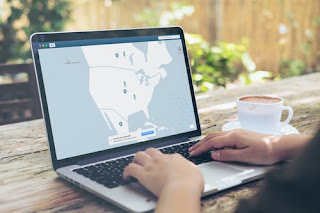As we mentioned in a previous post, a Virtual Private Network (VPN) is part of the tools you need to protect your online activity and information from getting in the wrong hands. To put it in simple words, a VPN encrypts the data and protects your online identity by hiding your IP address. It is a must-have when using a public Wi-Fi connection.
Before diving into the steps on how to use it, we believe it is important that we guide you through some considerations you need to take when choosing the right one for you.
- Figure out the main uses you will be giving to your VPN. Is it to stream movies at home? Is it for traveling or for public Wi-Fi connections? Is it for your computer or do you want to connect to different devices? All these answers will help you understand if you need one that offers more security, more bandwidth, or more servers.
- Make a list of the devices you want to connect using the VPN. The majority of services support main platforms (Windows, Mac, Linux, Android, and iOS), but you want to make sure that the VPN you are considering buying will actually work in the devices you are planning to use.
- Review the list of locations it offers. This might be one of the most important things to look at, make sure the locations and servers offered by the VPN cover the area where you will be and can give you a solution to tackle the geographical and censorship issues.
- Look for the payment plans. We know that a free VPN is something that you might be considering, but we truly suggest you make an investment for a better and more secure service. Look at the different plans they offer, if it is a monthly or yearly subscription, their payment methods, etc.
Once you cover all these four considerations, then it might be easier for you to choose among the many VPN services, remember each one of them has different features, some of them might be the right fit for your needs while others can just turn into a waste of money. So, do take some time to review them before subscribing to a monthly fee.

Using a Virtual Private Network
Step 1: Sign Up
Once you have chosen your VPN, you will be required to sign up, create an account (email, password) and make your first payment, most providers accept traditional payment options (debit, credit cards, PayPal), while others are now accepting cryptocurrencies. After you complete this initial step, you can download the software to your computer from their official website, and/or for any other devices (you will have to look for their official app in the AppStore or GooglePlay), you will be asked to log in with your recently created account.
Step 2: Connect Using Your VPN
Usually, when you open the VPN software, it will show a “Connect” button. Once you click it, it will choose the closest server to you because it is most likely to have the better speed. If you want to connect to a specific location, you will have to go to the settings tab and choose the desired one. You will be able to mark it as preferred, so it will be easier to access it later.
Step 3: Setting Up Your VPN
Although the settings vary from provider to provider, there are several basic items that remain the same. One of the first things you should do is activate the “kill switch”, this will prevent any online activity if the VPN connection drops. Then, you should look for any malware protection, VPN protocol, security options.
Some details to keep in mind, you will need to have a working internet connection when you use your VPN and make sure to set the “auto-connect” feature so it starts running as soon as you turn on your device and you always work through a safe connection. Also, keep in mind that using a VPN is not rocket science, providers have managed to make them as friendly and easy to use as possible, and for most of them, you only need the initial setup.

Comments
Post a Comment